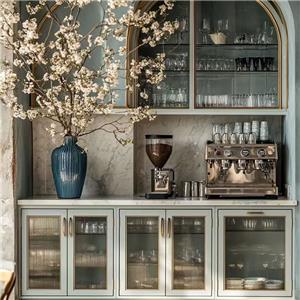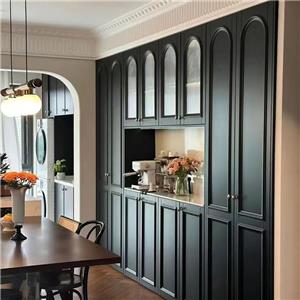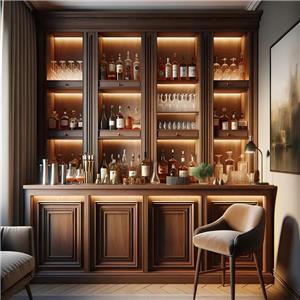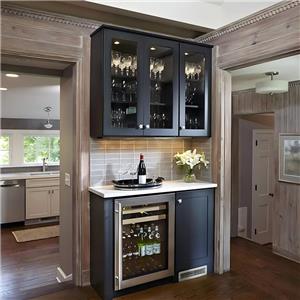Can bookcases be mounted on the wall?
Bookcases are common storage and display furniture in homes, usually used to place books, decorations, and various household items. As people's requirements for space utilization efficiency become higher and higher, the utilization of wall space has gradually become a trend. As a result, many people began to consider whether bookcases can be mounted on the wall to save floor space and improve the overall aesthetics.
This article will explore the feasibility, installation methods, advantages and disadvantages of mounting bookcases on the wall, and their applications in different living environments.
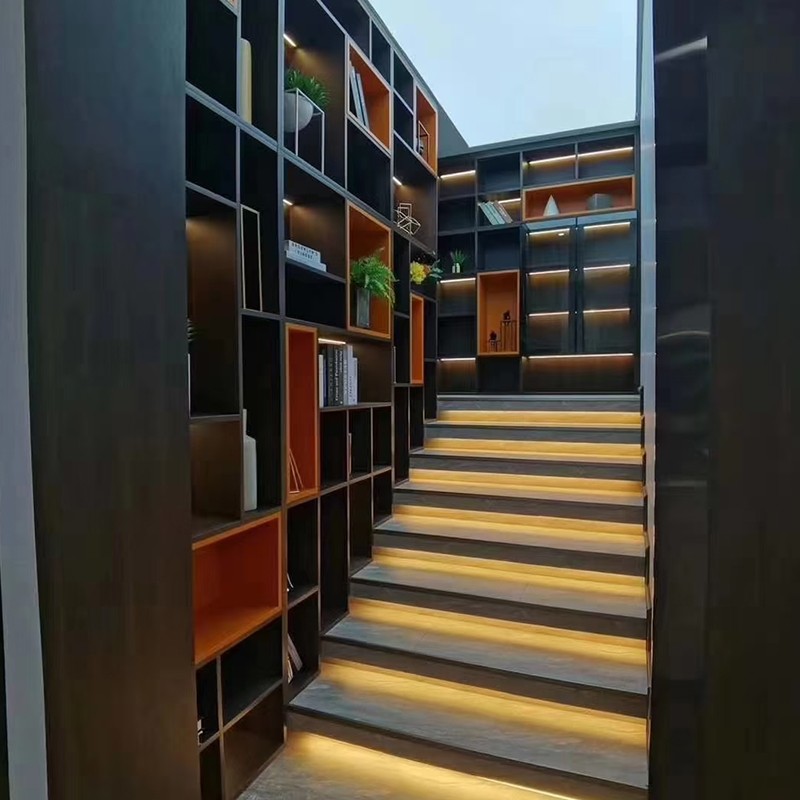
Can bookcases be mounted on the wall?
Mounting a bookcase on the wall sounds like an ideal space utilization solution, but in practice, multiple factors need to be considered to ensure safety and practicality after installation.
Load-bearing capacity of wall structure
When a bookcase is filled with books or other items, its weight is usually not to be underestimated. Therefore, the load-bearing capacity of the wall structure needs to be evaluated first. If the wall is a load-bearing wall, it can usually withstand a large weight; but if it is a lightweight partition wall, such as a gypsum board wall, additional reinforcement measures may be required, such as adding internal support or choosing a lighter bookcase.
Choice of wall material
Different wall materials also have different requirements for bookcase installation. Brick and concrete walls usually provide a strong fixing foundation, but they require the use of suitable expansion bolts or special fixings. For gypsum board walls, specially designed gypsum board screws or anchors are required to ensure a secure fixation.
Bookcase size and design
The size and design of the wall bookcase are also key factors affecting feasibility. Larger bookcases or deeper bookcases may require more fixing points or stronger supports, while smaller or shallower bookcases are easier to install and fix. In addition, choosing an open bookcase or a closed bookcase will also affect the complexity and load-bearing requirements of the installation.
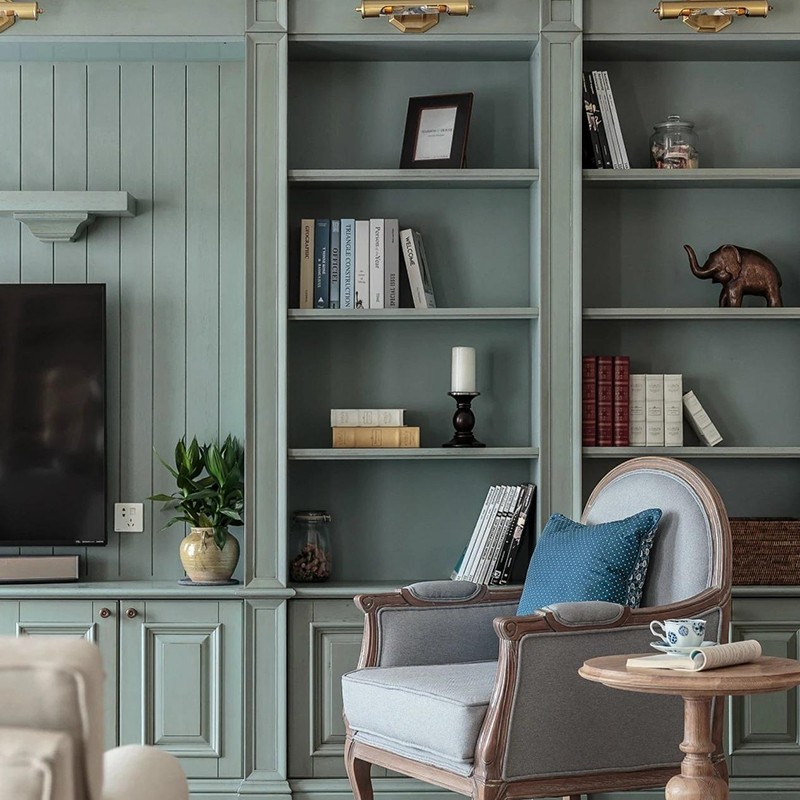
What are the installation methods for wall bookcases?
There are certain steps and methods to follow when installing a wall bookcase to ensure its stability and safety. Here are the steps to install a wall bookcase:
Measurement and marking
First, determine the location where the bookcase will be installed and use a tape measure to measure the width and height of the bookcase. Mark the bottom and top positions of the bookcase on the wall to ensure that the bookcase is level after installation. Use a level to check whether the marked line is level to avoid tilting after the bookcase is installed.
Choose the appropriate fixings according to the wall material, such as expansion bolts, plasterboard screws or wood screws. For heavier bookcases, it is recommended to use multi-point fixing to distribute the weight and increase stability.
Drilling and fixing
Use an electric drill to drill holes at the marked fixing points, and the depth of the hole should be slightly longer than the length of the fixing. Insert the fixings into the holes and use screws to fix the backboard or bracket of the bookcase. For larger bookcases, you can add support brackets to the bottom of the bookcase to further increase stability.
Installing the bookcase
After the fixings are installed, carefully hang the bookcase on the fixings and make final leveling and adjustments. After ensuring that the bookcase is stable, you can put books or other items in the bookcase.
Safety check
After the installation is completed, conduct a comprehensive safety check. Check whether all fixings are firm, whether the bookcase is level, and whether there are any signs of instability. If problems are found, they should be adjusted or strengthened in time.
What are the advantages and disadvantages of wall bookcases?
Mounting bookcases on the wall has its unique advantages, but there are also some disadvantages that need to be paid attention to. Understanding these pros and cons will help you better decide whether to mount your bookcase on the wall.
Advantages of wall bookcases
● Save floor space: Wall bookcases can effectively utilize wall space, free up floor area, and make the room appear more spacious. This is especially important in small apartments or rooms with limited space.
● Improve aesthetics: Wall bookcases are usually simple in design and integrated with the wall, which can enhance the overall decorative effect and increase the layering of the room.
● Flexible layout: The position of the wall bookcase can be flexibly adjusted according to the layout of the room, without being restricted by floor furniture, and is easier to match with other furniture and decorations.
● Reduce the burden of cleaning: Since the bookcase is hung on the wall, it reduces contact with the ground, avoids dust accumulation, and is more convenient to clean.
Disadvantages of wall bookcases
● High installation complexity: Compared with traditional floor-standing bookcases, the installation of wall bookcases requires more tools and skills, and higher precision is also required during the installation process.
● Load-bearing limit: The load-bearing capacity of wall bookcases is limited by the wall structure and fixings, and cannot carry overweight items, especially a large number of books or heavy objects.
● Safety risk: If improperly installed, the bookcase may be at risk of loosening or falling, especially in the event of an earthquake or unstable wall structure. Regular inspection and maintenance are required to ensure safety.
● Fixed position: Once a wall bookcase is installed, its position is relatively fixed and it is difficult to move freely like a floor-standing bookcase. This may cause inconvenience when adjusting the room layout.
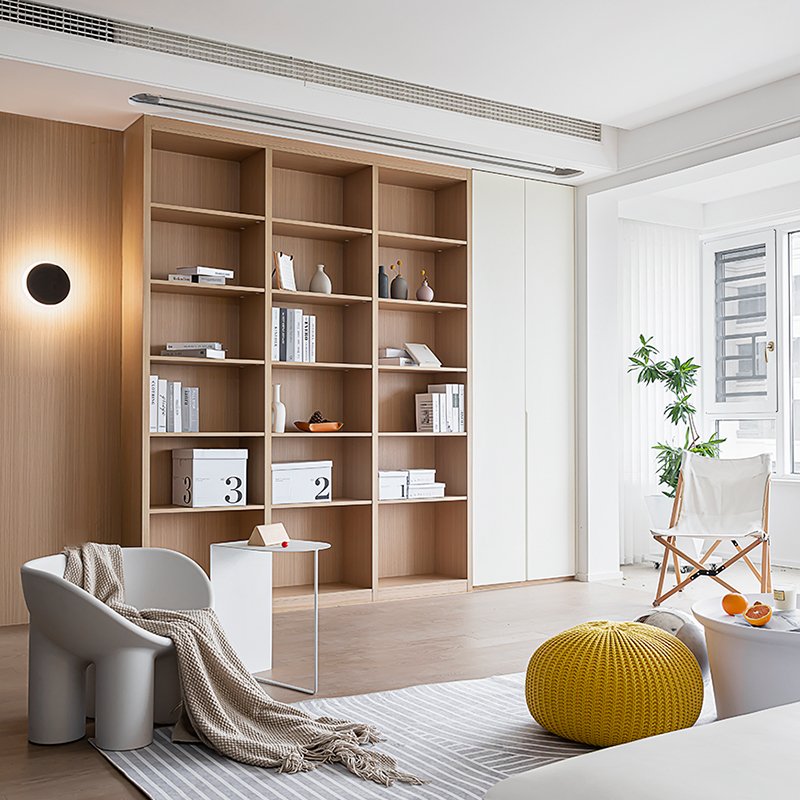
Application of wall bookcases in different environments
Wall bookcases have a wide range of applications and are suitable for almost every space in the home. In different rooms, wall bookcases can play different functions and blend with the environment.
Application in the living room
In the living room, the wall bookcase can not only be used as a storage space for books and decorations, but also as part of the TV wall to enhance the decorative effect of the wall. Through reasonable design, the wall bookcase can be integrated with the TV and audio equipment to create a fully functional home entertainment center.
Application in the bedroom
The bedroom is usually a space that requires quiet and comfort. The wall bookcase can be used as part of the bedside table or the end of the bed, which does not take up valuable floor space and provides sufficient storage. Open wall bookcases can be used to display books and photos, while closed bookcases can store personal items and keep the bedroom tidy.
Application in the study
The study is a common place for bookcases to be installed. Wall bookcases can make full use of the wall space in the study and provide a large amount of book storage area. At the same time, wall bookcases can be combined with desks to create an efficient working environment. Wall bookcases in the study are usually simple in design and easy to access books and office supplies.
Application in the kitchen
In the kitchen, wall bookcases can be used as storage space for kitchen supplies, condiments and tableware. Since kitchens usually have limited space, wall bookcases can effectively utilize wall areas and keep the countertops tidy. Choose bookcases made of durable and waterproof materials to extend their service life and avoid moisture or deformation.
Application in the corridor
The corridor is often a narrow and underutilized area in the home, but it is also an ideal place to install a wall bookcase. By installing bookcases on the corridor wall, storage space can be increased and an area for the family to display photos, artwork or collections can be provided, making the corridor no longer monotonous.
Application in the bathroom
Although wall bookcases are rarely used in bathrooms, for some bathrooms with larger spaces, wall bookcases can be used as storage areas for towels and toiletries. Choosing waterproof and moisture-proof materials to make bookcases can effectively prevent moisture in the bathroom from damaging the bookcases.

How to choose a suitable wall bookcase?
Choosing a suitable wall bookcase requires considering multiple factors, including size, material, style, and installation difficulty. Here are some practical selection suggestions:
Size and space matching
When choosing a wall bookcase, you should first consider whether the size of the bookcase matches the room space. The bookcase should not be too large to avoid occupying too much wall space, making the room appear small. For smaller rooms, you can choose narrow or shallow bookcases, which provide storage space without affecting the overall sense of space.
Material selection
The material of the wall bookcase directly affects its durability and aesthetics. Although solid wood bookcases have good texture, they are heavy and have high requirements for wall load-bearing. Bookcases made of composite wood or metal are lighter and suitable for environments with fragile wall structures. In addition, wall bookcases in kitchens and bathrooms should be made of waterproof and moisture-proof materials to extend their service life.
Style Matching
The style of the bookcase should be coordinated with the overall style of the room. Modern minimalist rooms can choose bookcases with simple lines and elegant colors, while traditional style rooms are suitable for bookcases with carved or decorative details. No matter what style you choose, the bookcase should strike a balance between functionality and decoration.
Installation Difficulty
Installation difficulty is also an important factor to consider when choosing a wall bookcase. For consumers who are not good at DIY or are unwilling to spend too much time on installation, it is recommended to choose a bookcase that is easy to install and comes with detailed instructions. Some bookcase brands also provide installation services, and you can consider using professionals to install it to ensure safety and stability.

